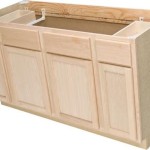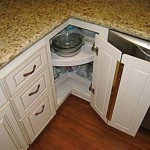Essential Aspects of Lower Kitchen Counter Height
Lower kitchen counter height is a crucial design element that significantly impacts the functionality, ergonomics, and overall aesthetics of your kitchen. It plays a vital role in determining the comfort and efficiency of cooking, food preparation, and other kitchen-related tasks.
Understanding the essential aspects of lower kitchen counter height is essential for creating a kitchen that meets your specific needs and preferences. This article will delve into these key aspects, covering factors such as standard measurements, ergonomic considerations, material choices, and design implications.
Standard Measurements
The standard height for lower kitchen counters in the United States is between 34 and 36 inches from the floor. However, this measurement can vary slightly depending on the height of the user and the specific task being performed. For example, taller individuals may prefer a slightly higher counter height to avoid hunching over, while shorter individuals may benefit from a lower counter to facilitate easier reach.
Ergonomic Considerations
Ergonomics plays a significant role in determining the ideal lower kitchen counter height. Proper counter height can help prevent discomfort, strain, and long-term musculoskeletal issues. When standing at the counter, your elbows should be bent at a 90-degree angle, and your wrists should be in a neutral position. This alignment promotes proper posture and reduces fatigue during prolonged use.
Material Choices
The material of your lower kitchen counter can influence its height. Granite and quartz countertops are typically thicker than laminate or butcher block countertops, resulting in a higher overall counter height. It's essential to consider the thickness of the countertop material when determining the appropriate counter height for your kitchen.
Design Implications
Lower kitchen counter height can also impact the overall design of your kitchen. Taller counters can create a more modern and sleek look, while shorter counters can evoke a more traditional or cozy atmosphere. The height of the counter can also influence the placement of other kitchen elements, such as cabinets, appliances, and lighting. Careful consideration of counter height can help create a cohesive and visually appealing kitchen.
By understanding these essential aspects of lower kitchen counter height, you can make informed decisions that optimize the functionality, ergonomics, and aesthetics of your kitchen. Whether you're renovating an existing kitchen or designing a new one, paying attention to these factors will help you create a space that is both comfortable and stylish.
Conclusion
Lower kitchen counter height is an intricate design element that intertwines functionality, ergonomics, material choices, and design implications. By considering the essential aspects outlined in this article, you can determine the optimal counter height for your kitchen, ensuring a comfortable and efficient cooking experience while complementing the overall aesthetic of your space.

Kitchen Cabinet Dimensions

Know Standard Height Of Kitchen Cabinet Before Installing It

Your Kitchen Renovation Measured For Perfection Rona

Standard Kitchen Counter Depth Hunker Cabinet Dimensions Cabinets Height

Standard Kitchen Counter Height Civil Scoops

Base Cabinet Size Chart Builders Surplus Modular Kitchen Cabinets Sizes

N Standard Kitchen Dimensions Renomart

Know Standard Height Of Kitchen Cabinet Before Installing It

Cabinet Countertop Clearance To Be Mindful Of When Considering Wall Cabinets

Pin On Kitchens
Related Posts








